Objective Building Energy Performance Benchmarking Using Data Envelopment Analysis and Monte Carlo Sampling
Abstract
:1. Introduction
2. Case Studies: Two Office Buildings
2.1. Building A (Privately-Owned Office Building)
2.2. Building B (Government-Owned Public Office Building)
3. Data Envelopment Analysis and Monte Carlo Sampling
3.1. Data Envelopment Analysis (DEA)
3.2. Inputs and Outputs for DEA
3.3. Monte Carlo Sampling for Generation of Peer Buildings
4. Results
4.1. EUI and DEA Efficiency Scores of 1000 Virtual Peer Buildings
4.2. Energy Performance Benchmarking of Two Real Office Buildings against 1000 Peer Buildings
5. Conclusions
Acknowledgments
Author Contributions
Conflicts of Interest
References
- U.S. Environmental Protection Agency. Benchmark with EPA’s ENERGY STAR® Portfolio Manager. US Environmental Protection Agency, 2014. Available online: http://www.energystar.gov/ia/partners/reps/ci_program_sponsors/downloads/Portfolio_Manager_Fact_Sheet.pdf (accessed on 11 January 2017).
- Filippín, C. Benchmarking the energy efficiency and greenhouse gases emissions of school buildings in central Argentina. Build. Environ. 2000, 35, 407–414. [Google Scholar] [CrossRef]
- Monts, J.K.; Blissett, M. Assessing energy efficiency and energy conservation potential among commercial buildings: A statistical approach. Energy 1982, 7, 861–869. [Google Scholar] [CrossRef]
- Sharp, T. Energy Benchmarking Commercial Office Buildings. In Proceedings of the 1996 American Council for an Energy-Efficient Economy (ACEEE 1996) summer study on energy efficiency in buildings, Washington, DC, USA, 1996; pp. 321–329. [Google Scholar]
- American Society of Heating, Refrigerating and Air-Conditioning Enginners. Standard 90.1-2016—Energy Standard for Buildings Except Low-Rise Residential Buildings; American Society of Heating, Refrigerating and Air-Conditioning Engineers, Inc.: Atlanta, GA, USA, 2016. [Google Scholar]
- British Standards Institution (BSI). Energy Performance of Buildings-Methods for Expressing Energy Performance and the Energy Certification of Buildings; EN 15217:2007; British Standards Institution: London, UK, 2007. [Google Scholar]
- Augenbroe, G.; Park, C.S. Quantification methods of technical building performance. Build. Res. Inf. 2005, 33, 159–172. [Google Scholar] [CrossRef]
- U.S. Environmental Protection Agency. What Is Energy Use Intensity (EUI)? Available online: http://www.eia.gov/emeu/efficiency/measure_discussion.htm (accessed on 11 January 2017).
- U.S. Energy Information Administration. Energy Efficiency Measurement Discussion. Energy Information Administration, 2000. Available online: http://www.eia.gov/emeu/efficiency/measure_discussion.htm (accessed on 11 January 2017).
- Department of Energy/Energy Information Administration. Measuring Energy Efficiency in the United States’ Economy: A Beginning; US Department of Energy/Energy Information Administration: Washington, DC, USA, 1995.
- Charnes, A.; Cooper, W.W.; Rhodes, E. Measuring the efficiency of decision making units. Eur. J. Oper. Res. 1978, 2, 429–444. [Google Scholar] [CrossRef]
- Lee, W.S. Benchmarking the energy efficiency of government buildings with data envelopment analysis. Energy Build. 2008, 40, 891–895. [Google Scholar] [CrossRef]
- Lee, W.S.; Lee, K.P. Benchmarking the performance of building energy management using data envelopment analysis. Appl. Therm. Eng. 2009, 29, 3269–3273. [Google Scholar] [CrossRef]
- Önüt, S.; Soner, S. Energy efficiency assessment for the Antalya Region hotels in Turkey. Energy Build. 2006, 8, 964–971. [Google Scholar] [CrossRef]
- Yu, F.W.; Chan, K.T. Improved energy management of chiller systems by multivariate and data envelopment analysis. Appl. Energy 2012, 92, 168–174. [Google Scholar] [CrossRef]
- Talluri, S. Data envelopment analysis: Models and extensions. Decis. Line 2000, 31, 8–11. [Google Scholar]
- Charnes, A.; Cooper, W.W.; Lewin, A.Y.; Seiford, L.M. Data Envelopment Analysis: Theory, Methodology, and Applications; Springer: New York, NY, USA, 2013. [Google Scholar]
- Ramanathan, R. An Introduction to Data Envelopment Analysis: A Tool for Performance Measurement; Sage Publication Ltd.: Thousand Oaks, CA, USA, 2003. [Google Scholar]
- Ministry of Land, Infrastructure and Transport. Building Data Book. Ministry of Land, Infrastructure and Transport, 2014. Available online: http://stat.molit.go.kr/portal/cate/statView.do (accessed on 11 January 2017).
- Deru, M.; Field, K.; Studer, D.; Benne, K.; Griffith, B.; Torcellini, P.; Liu, B.; Halverson, M.; Winiarski, D.; Rosenberg, M.; et al. Department of Energy Commercial Reference Building Models of the National Building Stock; National Renewable Energy Laboratory: Denver, CO, USA, 2011. [Google Scholar]
- American Society of Heating, Refrigerating and Air-Conditioning Engineers. Handbook Fundamentals; American Society of Heating, Refrigerating and Air-Conditioning Engineers, Inc.: Atlanta, GA, USA, 2013. [Google Scholar]
- Macdonald, I.A. Quantifying the Effects of Uncertainty in Building Simulation. Ph.D. Thesis, University of Strathclyde, Glasgow, UK, 2002. [Google Scholar]
- Kim, S.H. Air Conditioning System; Geongiwon Book Publishing: Seoul, Korea, 2012. (In Korean) [Google Scholar]
- Kotobuki Engineering Manufacturing Co. The Guide to Energy Saving Design Standard; Korea Energy Management Corporation: Seoul, Korea, 2011. (In Korean) [Google Scholar]
- Society of Air-Conditioning Refrigerating and Engineers of Korea. Equipment Engineering Handbook; The Society of Air-Conditioning and Refrigerating Engineers of Korea: Seoul, Korea, 2004. (In Korean) [Google Scholar]
- Heo, Y.S. Bayesian Calibration of Building Energy Models for Energy Retrofit Decision-Making under Uncertainty. Ph.D. Thesis, Georgia Institute of Technology, Atlanta, GA, USA, 2011. [Google Scholar]
- American Society of Heating, Refrigerating and Air-Conditioning Engineers. ASHRAE Standard 62.1. Ventilation for Acceptable Indoor Air Quality; American Society of Heating, Refrigerating and Air-Conditioning Engineers, Inc.: Atlanta, GA, USA, 2016. [Google Scholar]
- Department of Energy. EnergyPlus Input Output Reference: The Encyclopedic Reference to EnergyPlus Input and Output; US Department of Energy: Washington, DC, USA, 2012.
- Hopfe, C.J. Uncertainty and Sensitivity Analysis in Building Performance Simulation for Decision Support and Design Optimization. Ph.D. Thesis, Eindhoven University of Technology, Eindhoven, The Netherlands, 2009. [Google Scholar]
- Tian, W. A review of sensitivity analysis methods in building energy analysis. Renew. Sustain. Energy Rev. 2013, 20, 411–419. [Google Scholar] [CrossRef]
- Kim, Y.J.; Ahn, K.U.; Park, C.S. Decision Making of HVAC System using Bayesian Markov Chain Monte Carlo method. Energy Build. 2014, 72, 112–121. [Google Scholar] [CrossRef]
- MOL, Business Labor force Survey, Ministry of Employment and Labor in South Korea. 2012. Available online: http://laborstat.molab.go.kr/newOut/menu01/menu01_intro.jsp?pageNum=0 (accessed on 11 January 2017).
- Hanmi, C.E. Field Measurement of Building Plant Systems; Hanmi: Seoul, Korea, 2015. (In Korean) [Google Scholar]
- Greenacre, M.; Primicerio, R. Measures of Distance between Samples: Euclidean. In Multivariate Analysis of Ecological Data; Fundacion BBVA Publication: Bilbao, Spain, 2013; pp. 47–59. [Google Scholar]

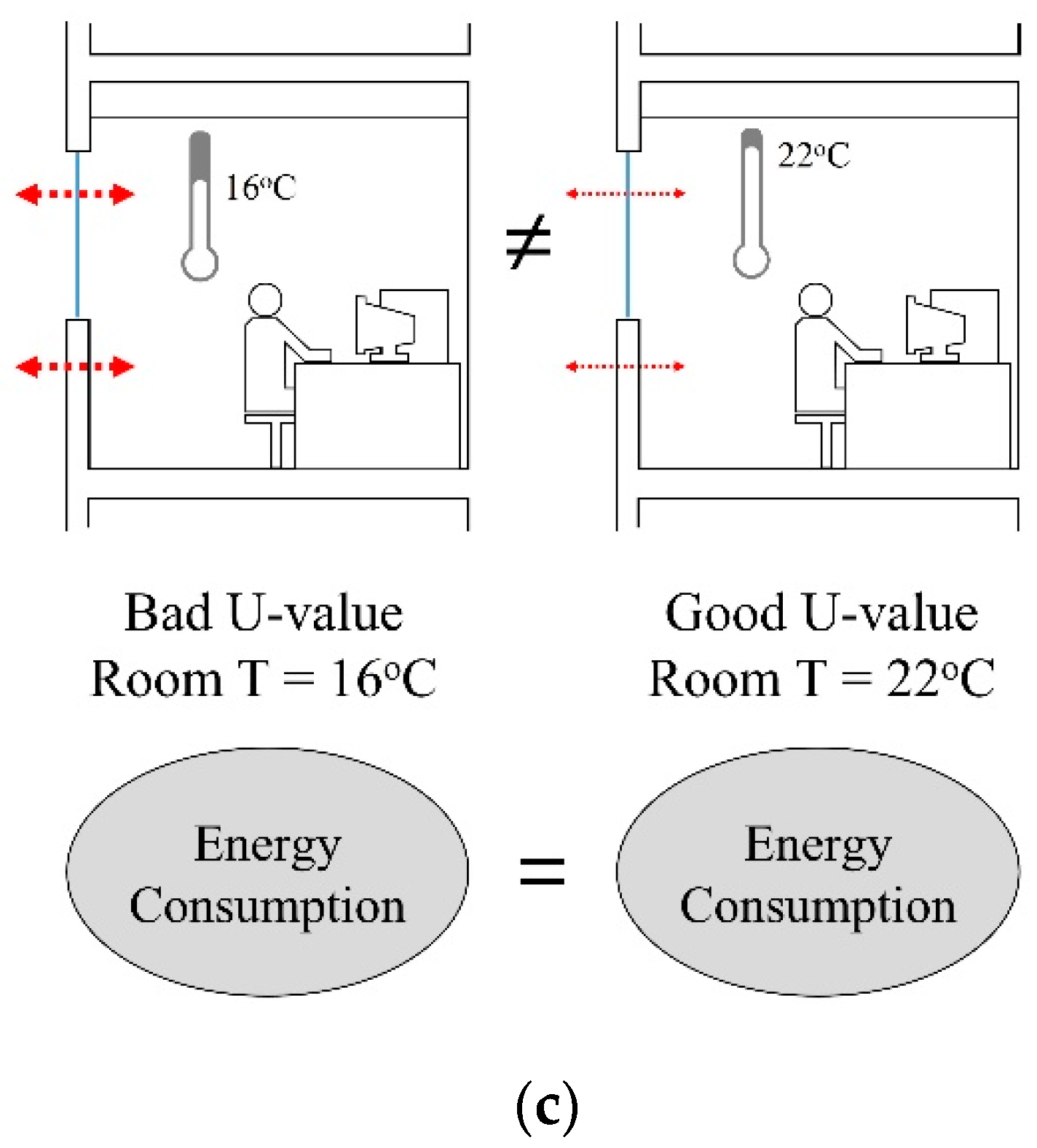
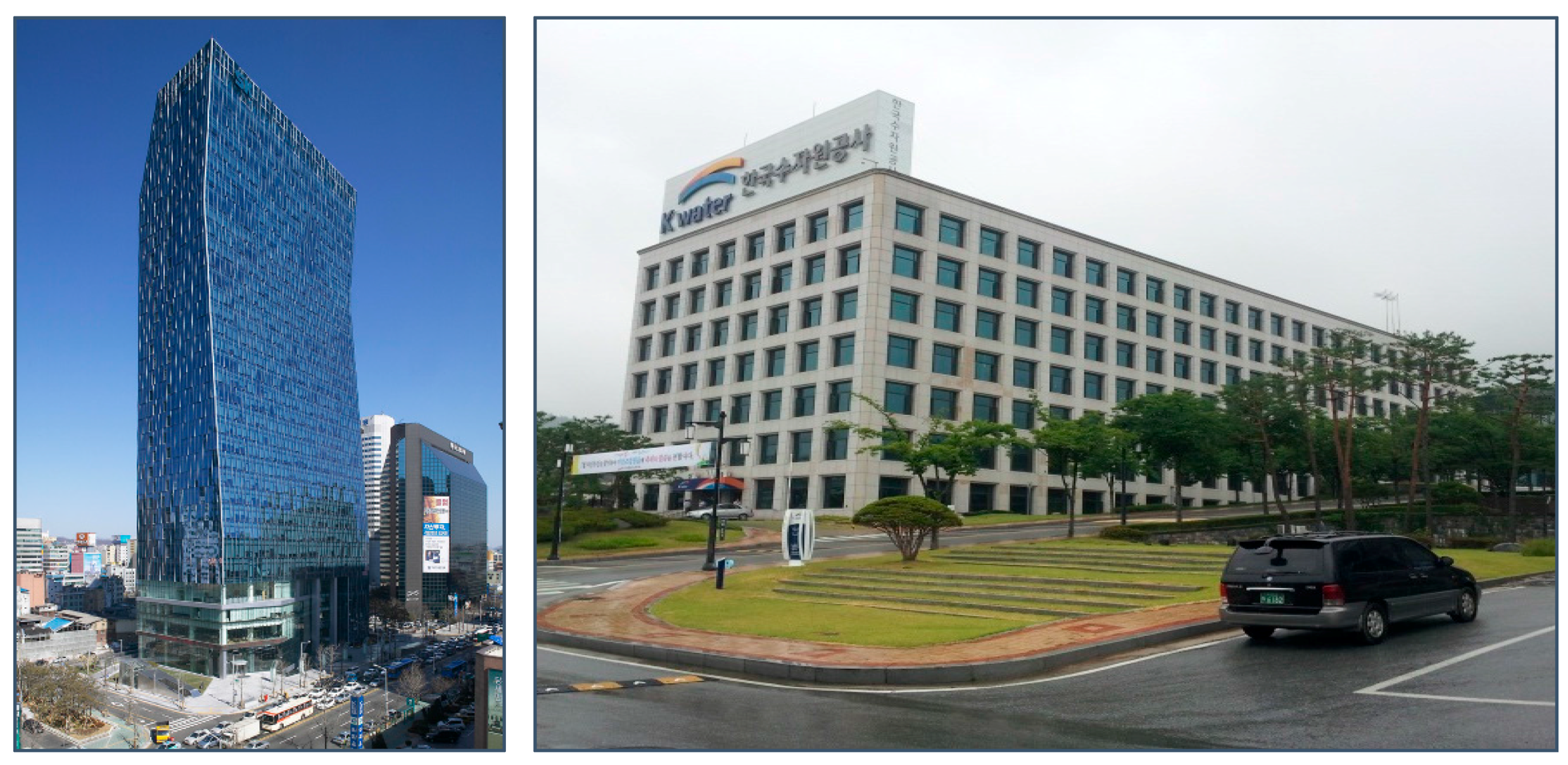
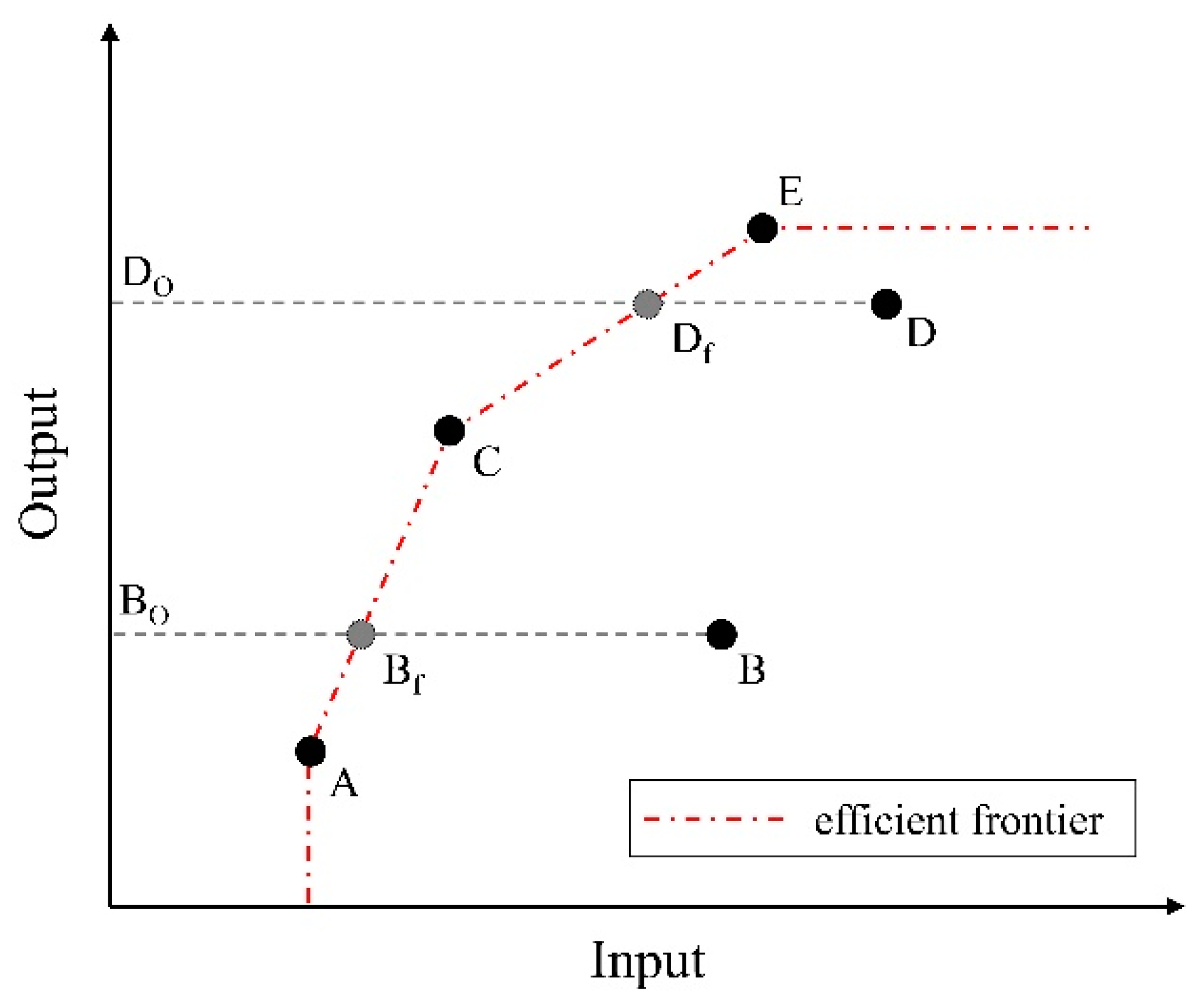
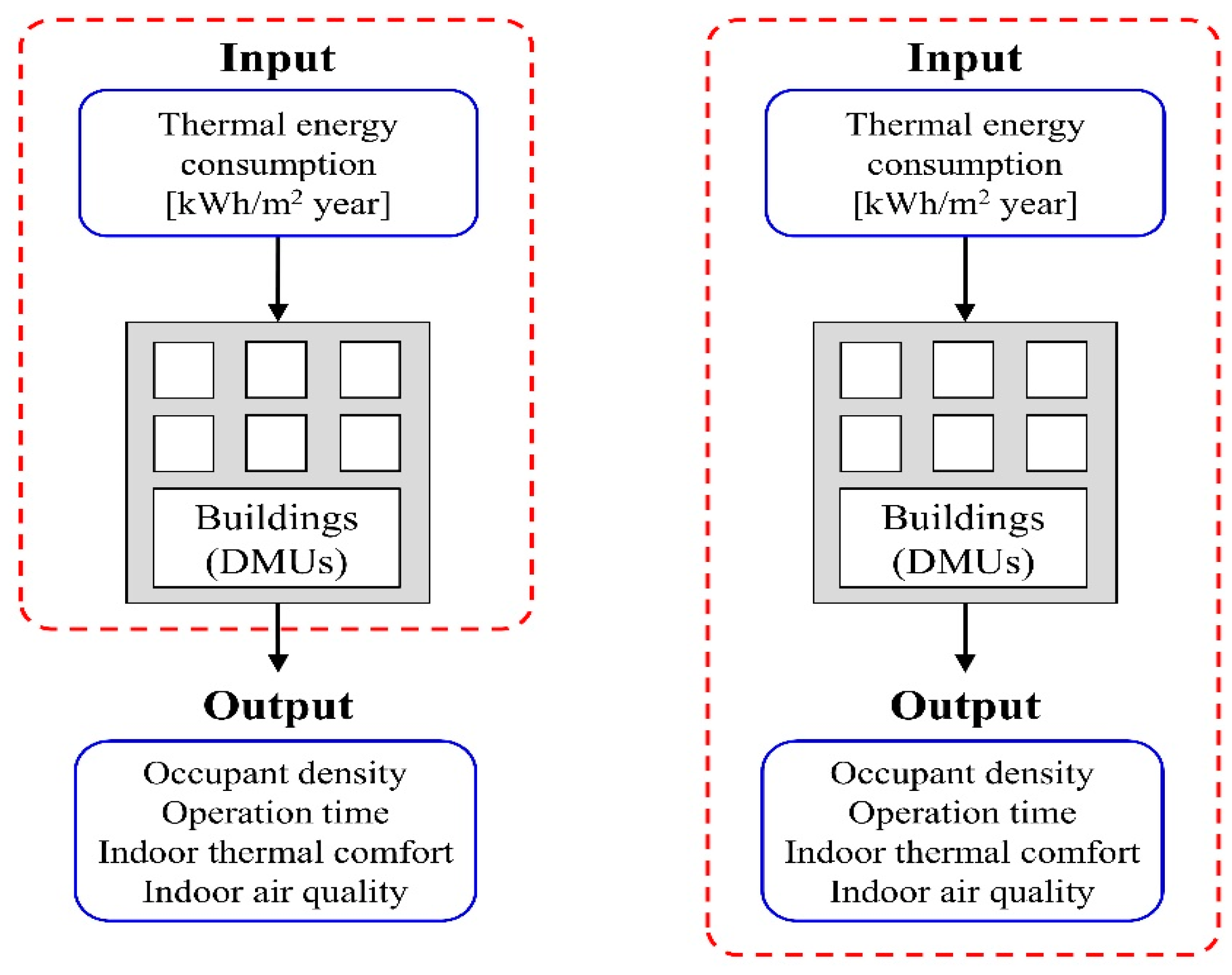
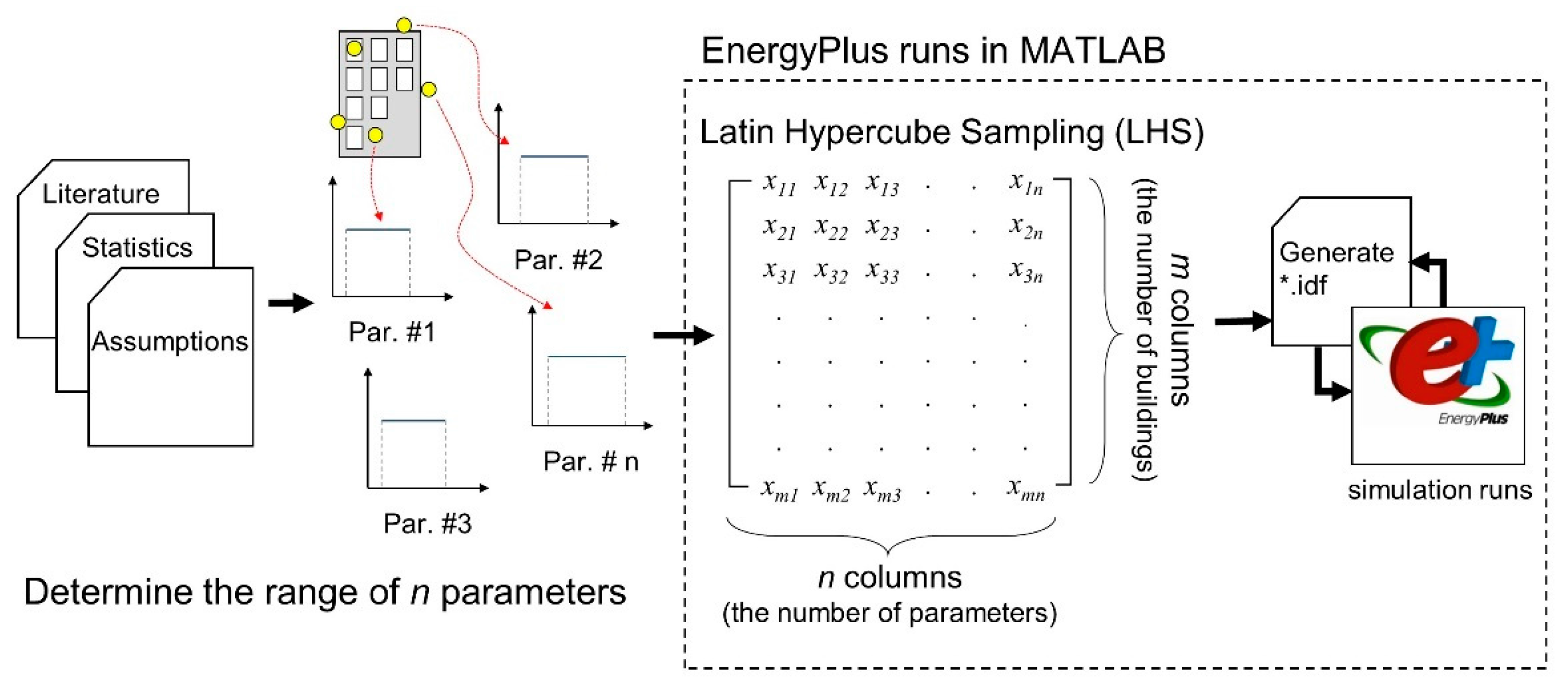
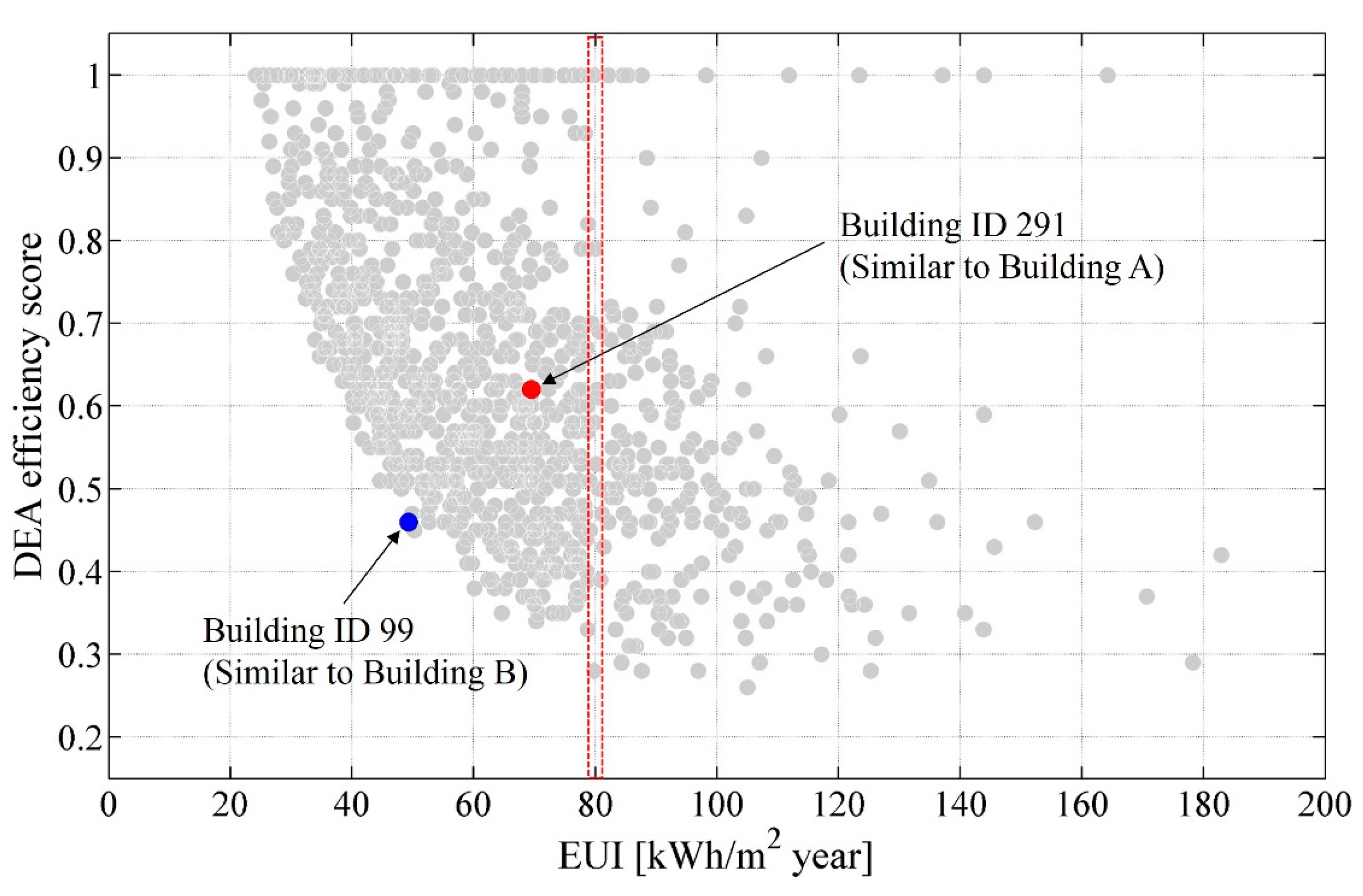
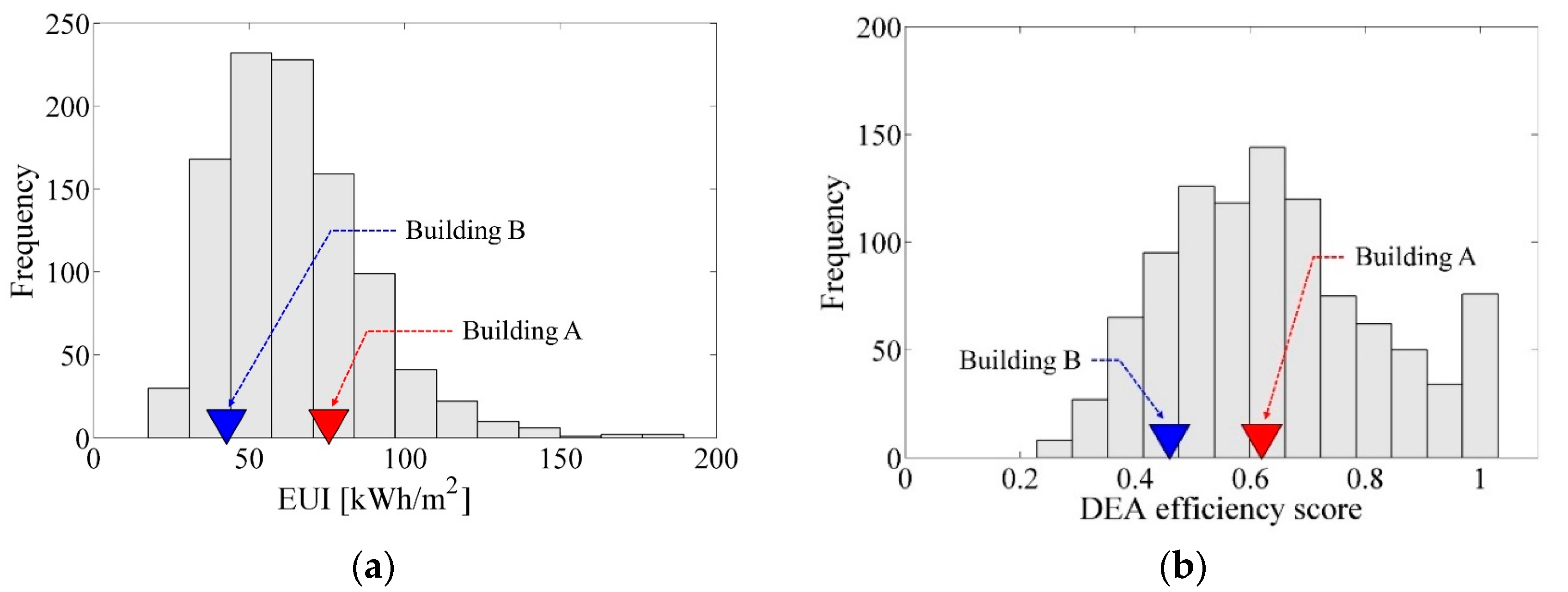
| Parameters | Range [min, max] | References | |
|---|---|---|---|
| Geometric | The number of floors [-] | [10, 18] | MOLIT [19] |
| Floor area [m2] | [1112, 2282] | ||
| Aspect ratio [-] | [0.25, 1] | ||
| Floor height [m] | [3.85, 4.57] | Deru et al. [20] | |
| Window to wall ratio [%] | [50, 95] | MOLIT [19] | |
| Opaque envelope | Concrete–Conductivity [W/mK] | [0.36, 1.69] | Macdonald [22] |
| Concrete–Specific heat [J/kgK] | [790, 926] | Macdonald [22] | |
| Concrete–Density [kg/m3] | [974, 2280] | Macdonald [22] | |
| Construction thickness [mm] | [50, 300] | ASHRAE [21] | |
| Insulation–Conductivity [W/mK] | [0.03, 0.07] | Macdonald [22] | |
| Insulation–Specific heat [J/kgK] | [693, 1273] | Macdonald [22] | |
| Insulation–Density [kg/m3] | [19.8, 123.8] | Macdonald [22] | |
| Insulation thickness [mm] | [50, 200] | ASHRAE [21] | |
| Transparent envelope | Glazing type [-] | [1, 61] | ASHRAE [21] |
| Frame type [-] | [1, 3] | ||
| Internal load density | Occupant density [person/m2] | [0.14, 0.25] | Kim [23], ASHRAE [21] |
| Lighting density [W/m2] | [12, 30] | ||
| Appliance density [W/m2] | [10.8, 21.5] | ASHRAE [21] | |
| Control | Heating set-point temperature [°C] | [18, 24] | KEMCO [24], SAREK [25] |
| Cooling set-point temperature [°C] | [24, 29] | KEMCO [24], SAREK [25] | |
| Operation hours [hour] | [7, 11] | MOL [32] | |
| Plant/HVAC | Heating system efficiency | [0.5, 0.85] | Hanmi C&E [33] |
| Cooling system COP | [2.5, 4.5] | Hanmi C&E [33] | |
| Fan total efficiency | [0.6, 0.7] | Heo [26] | |
| Fan motor efficiency | [0.75, 0.87] | ||
| Pump motor efficiency | [0.7, 0.83] | ||
| Others | Infiltration [1/hour] | [0.1, 1.25] | Heo [26] |
| Outdoor air intake [m3/s/person] | [0.0025, 0.01] | ASHRAE [21], ASHRAE [27] | |
| Internal thermal capacity [-] | [0.4, 0.6] | Deru et al. [20] | |
| Building ID # | Input | Outputs | DEA Efficiency Score | |||
|---|---|---|---|---|---|---|
| EUI [kWh/m2] | Operation Hour [Hours] | Occupancy Density [Person/m2] | PPD [%] | CO2 [ppm] | ||
| 276 | 79.9 | 9 | 0.23 | 27.1 | 823 | 0.58 |
| 494 | 79.7 | 11 | 0.24 | 17.3 | 765 | 1.00 |
| 499 | 80.0 | 8 | 0.23 | 22.2 | 764 | 0.79 |
| 648 | 80.2 | 7 | 0.23 | 40.1 | 835 | 0.53 |
| 770 | 80.2 | 9 | 0.20 | 15.8 | 846 | 0.61 |
| 786 | 79.7 | 8 | 0.15 | 60.2 | 1251 | 0.28 |
| 845 | 80.4 | 7 | 0.23 | 17.9 | 848 | 0.62 |
| Difference (%) | 1% | 36% | 37% | 74% | 39% | 72% |
| Building ID # | Input | Outputs | DEA Efficiency Score | ||||||||
|---|---|---|---|---|---|---|---|---|---|---|---|
| EUI [kWh/m2] | Operation Hour [Hours] | Occupancy Density [Person/m2] | PPD [%] | CO2 [ppm] | |||||||
| kWh/m2 | Ran-King | hours | Ran-King | Person/m2 | Ran-King | - | Ran-King | ppm | Ran-King | ||
| 442 | 22.6 | 1 | 8 | 672 | 0.18 | 670 | 59.2 | 967 | 1098 | 768 | 1.0 |
| 795 | 164.2 | 997 | 10 | 93 | 0.24 | 122 | 18.4 | 67 | 727 | 17 | 1.0 |
| Building ID # | Input (EUI) | Output #1 (Operation Hour) | Output #2 (Occupancy Density) | Output #3 (PPD) | Output #4 (CO2) | DEA Efficiency Score | ||||||
|---|---|---|---|---|---|---|---|---|---|---|---|---|
| kWh/m2 | Ran-King | hours | Ran-King | Person/m2 | Ran-King | - | Ran-King | ppm | Ran-King | - | Ran-King | |
| 291 | 69.5 | 636 | 10 | 93 | 0.15 | 931 | 18.9 | 79 | 788 | 226 | 0.62 | 508 |
| Building A | 75.6 | - | 10 | - | 0.12 | - | 15.0 | - | 759 | - | - | - |
| Building ID # | Input (EUI) | Output #1 (Operation Hour) | Output #2 (Occupancy Density) | Output #3 (PPD) | Output #4 (CO2) | DEA Efficiency Score | ||||||
|---|---|---|---|---|---|---|---|---|---|---|---|---|
| kWh/m2 | Ran-King | hour | Ran-King | Person/m2 | Ran-King | - | Ran-King | ppm | Ran-King | - | Ran-King | |
| 99 | 49.3 | 243 | 8 | 672 | 0.17 | 738 | 59.6 | 969 | 1321 | 920 | 0.46 | 841 |
| Building B | 42.7 | - | 8 | - | 0.14 | - | 55.2 | - | 1317 | - | - | - |
© 2017 by the authors. Licensee MDPI, Basel, Switzerland. This article is an open access article distributed under the terms and conditions of the Creative Commons Attribution (CC BY) license (http://creativecommons.org/licenses/by/4.0/).
Share and Cite
Yoon, S.-H.; Park, C.-S. Objective Building Energy Performance Benchmarking Using Data Envelopment Analysis and Monte Carlo Sampling. Sustainability 2017, 9, 780. https://doi.org/10.3390/su9050780
Yoon S-H, Park C-S. Objective Building Energy Performance Benchmarking Using Data Envelopment Analysis and Monte Carlo Sampling. Sustainability. 2017; 9(5):780. https://doi.org/10.3390/su9050780
Chicago/Turabian StyleYoon, Seong-Hwan, and Cheol-Soo Park. 2017. "Objective Building Energy Performance Benchmarking Using Data Envelopment Analysis and Monte Carlo Sampling" Sustainability 9, no. 5: 780. https://doi.org/10.3390/su9050780
APA StyleYoon, S.-H., & Park, C.-S. (2017). Objective Building Energy Performance Benchmarking Using Data Envelopment Analysis and Monte Carlo Sampling. Sustainability, 9(5), 780. https://doi.org/10.3390/su9050780





